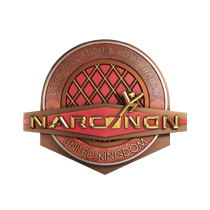This Will “Blow” You Away

It’s a beautiful day on the beaches of southern Spain. The sun is shining, the sky is clear. You can see the perfect outline of Gibraltar and Morocco. But the placidity of the water where the Mediterranean Sea meets the Atlantic Ocean is a paradox when you know what really goes on after sunset.
The shores of Spain are a major entry route for cocaine and other drugs to the rest of Europe, arriving directly from Latin America and North Africa. At night, the Spanish “Guardia Civil” (police), equipped with night vision goggles, patrol the beaches of these charming Spanish towns that any traveller would long to see.
Here are the facts. The amount of cocaine seized in Spain more than doubled in 2017 compared to the previous year (from 15 to 32 tons), accounting for 45% of cocaine intercepted in Europe. Just last December, the Spanish police seized 5,900 kg (13,000 lbs) of cocaine coming from Colombia, in a container supposedly containing bananas. This quantity is estimated to have sold for about 210 million Euros ($249 million), making it the largest cocaine bust in over 18 years. Last month, again, 745 kg of cocaine were found hidden in a shipment of pineapples.
Think about that for a second: how many grams of cocaine could then be consumed, by how many millions of people, and affect how many more? Mental, physical and social issues are the real consequences of drug trafficking.
Today, cocaine is still one of the most consumed drugs in Europe and is extremely addictive. Beach holidays and party scenes go hand in hand with the consumption of this harmful, illegal drug. But it does not stop there. About 5% of young adults, aged 15 to 34 years, are said to use cocaine on a weekly basis. The marketed mirage of a jet-setting, fun and care-free mentality paired with barefoot-in-the-sand pleasure sensations are entirely false and, in fact, useless as an escape from routine responsibilities of life. There’s another paradox.
The problem affects and involves everyone, as cocaine consequences know no boundaries of sex, age, economic, social and even political backgrounds. It is not a teenage or adult, male or female, black or white, poor or rich polarizing issue. It permeates every aspect of society, near or far from Latin America to Africa, to the USA, and to Europe.
For decades it has been getting worse. Cocaine is more potent, more accessible, more harmful. But in spite of this knowledge, our experience, and the statistics, the dwindling spiral continues.
Deaths from cocaine overdoses are still on the rise despite all the personal stories and the raw statistics. Sudden or unexpected deaths can occur after the very first use of cocaine. Among other side effects are severe depression and feelings of anxiety, nausea, headaches, seizures and cardiac arrest, to name just a few. That’s not a worthwhile holiday or weekend “hangover.” And, almost 40% of those who enter rehab do it because of cocaine—the most common drug people need help with.
In most drug rehabilitation facilities, Cocaine and other drug addictions are treated with other drugs, which is the biggest paradox of all time. More drugs are used to treat the drugs, which causes a need for more drugs.
The only way to truly cure drug addiction is to live a life free from the harmful, mental and physical effects of drugs. That’s why it makes sense that the Narconon rehab program focuses on drug-free rehabilitation as the solution to help those who genuinely seek freedom from drugs.
Sources:

